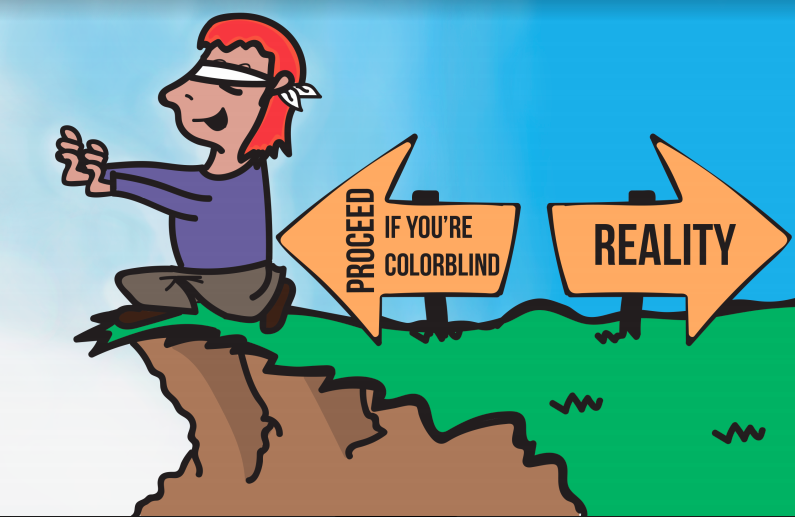The “colorblindness” ideology has become prevalent in society, but refusing to “see color” is unproductive and does more harm than good to race relations and conversations. Graphic by Suncana Pavlic.
Co-Editor-in-Chief Aneesa Conine-Nakano examines the detrimental effects of racial “colorblindness.”
“I don’t see color.”
Most people have either heard or said this sentiment at some point in their life.
It’s a nice notion, right?
If one cannot see color, they cannot be racist. Race and all the intricacies that follow it can suddenly be erased from their minds and they can live in peace.
Wrong.
Along with the U.S. Civil Rights Movement starting in the mid-1950s came the “progressive” ideology that not seeing color was a way to avoid being racist. This morphed into the idea that race should not be a factor considered in applications, creating systems and services.
For example, the stance against affirmative action is widely backed up by the idea of color blindness, as well as the case against ethnic studies programs. Regardless of one’s opinions on either of these issues, claiming to not see color as a rebuke for programs designed to promote equality is insufficient and naive.
Racism doesn’t come from acknowledging that color and different races exist. The problem is when people act upon and vocalize racist beliefs, intentionally or unintentionally.
“Colorblindness” is a cheap evasion of difficult conversations, and people neglect that race is a major part of one’s identity.
“Colorblindness” is a cheap evasion of difficult conversations, and people neglect that race is a major part of one’s identity. It often informs how we see and interact with the world and conversely, how the world sees and interacts with us.
Based on where one lives, their upbringing, their personal identity and countless other factors, people form ideologies about race, class, gender and sexuality, among other groupings. Stereotypes can then manifest themselves into acts of bigotry, and more subtly through internalized racism.
The failure of the colorblind mindset can be seen in a 2010 study published in a journal of the Association for Psychological Science. It concluded, “students exposed to a colorblind mindset, as opposed to a value-diversity mindset, were actually less likely to detect overt instances of racial discrimination.”
Additionally, colorblindness can also translate into seeing everyone as having the same white, middle-class normative culture, portrayed in mainstream media, which is unfitting for many Americans.
The belief that America is a “melting pot” assumes that we are blended together, but we are not.
More importantly, we shouldn’t be. By controlling the narrative of people of color and what they are presumed to aspire to be, we ignore a huge part of one’s identity.
If we can listen non-defensively to each other’s experiences, especially as it applies to race, whether negative or positive, it opens up a new realm of understanding. Though this may be a more lengthy than the colorblind approach, everyone deserves better than to be assimilated into one culture, even if it is not “convenient” or “easy.”
Conversations about race and identity can be uncomfortable. Although no one person has the authority to speak for an entire race, by starting open-minded conversations about lived experiences, we open the door to more understanding and compassion.
If conversations are still too daunting, people can gain insight from the countless memoirs, studies and documentaries that examine the role of race and identity politics in society.
Regardless, ignorance cannot be bliss. It is our responsibility to do better than to sweep hard conversations under the rug.
More from Aneesa Conine-Nakano
